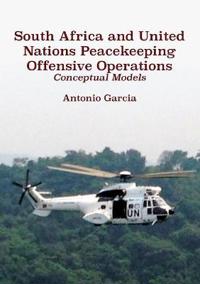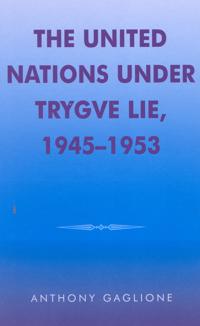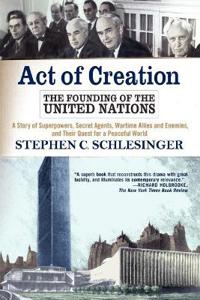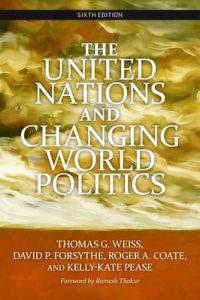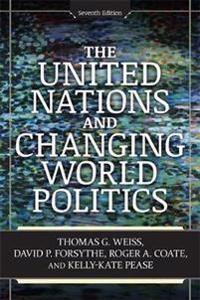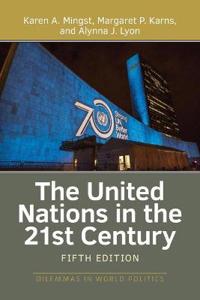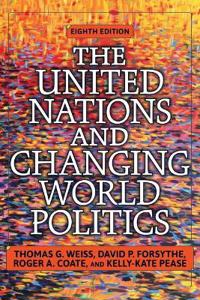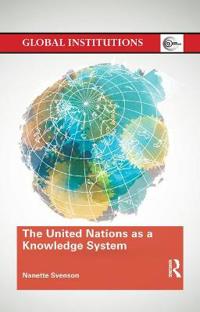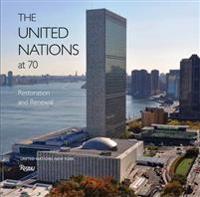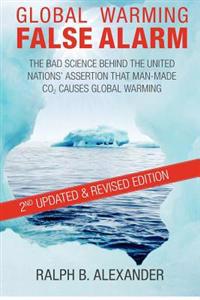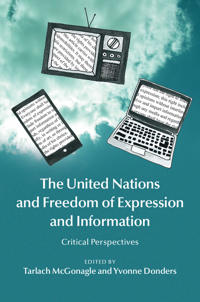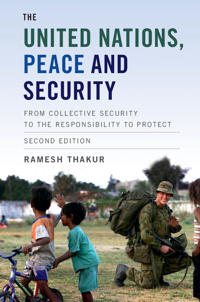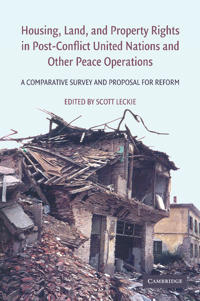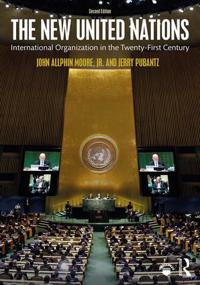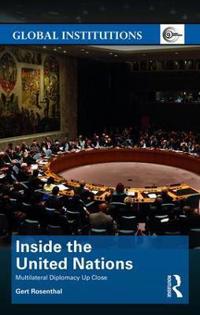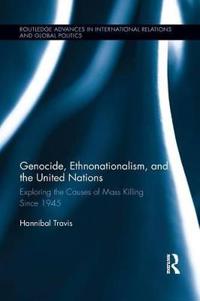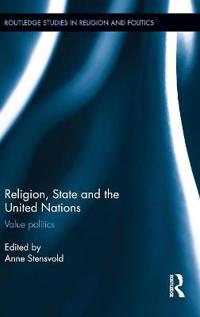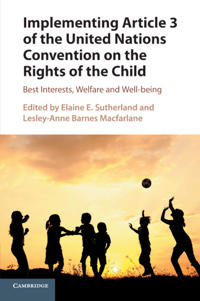South Africa and United Nations Peacekeeping Offensive Operations (häftad)
ISBN: 9780797494411 - UTGIVEN: 2018-08The creation of the Force Intervention Brigade (FIB) as the sharp tactical edge of the United Nations Stabilisation Mission in the Democratic Republic of the Congo (MONUSCO), tasked with the neutralising of armed groups, was a watershed moment in the history of modern peace missions. What was more s[...]
United Nations
ISBN: 9780802145291 - UTGIVEN: 2011-12"United Nations: A History" begins with its creation in 1945. Although the organization was created to prevent war, many conflicts have arisen, ranging from The Korean War, to The Six Day War, to genocide in Bosnia and Rwanda. Stanley Meisler's in-depth research examines the crises and many key poli[...]
United Nations Under Trygve Lie, 1945-1953 (Inbunden)
avAnthony Gaglione
ISBN: 9780810836983 - UTGIVEN: 2002-01This volume traces the events and personalities that led to the creation of the United Nations and analyzes the period spanning the tenure of its first secretary-general, Trygve Lie. It is also, in part, a book about the Cold War. The author shows that the end of Great Power cooperation prevented th[...]
Act of Creation, The Founding of the United Nations (Häftad)
avStephen C. Schlesinger
ISBN: 9780813332758 - UTGIVEN: 200411The dramatic unfolding of how, against seemingly hopeless odds at the end of World War II, the most important international organization in the world, the United Nations, came to be The pivotal and little-known story of how Secretary of State Edward Stettinius and the new American President, Harry T[...]
The United Nations and Changing World Politics (Häftad)
avThomas G. Weiss, David P. Forsythe, Roger A. Coate
ISBN: 9780813344355 - UTGIVEN: 201002This is a comprehensive examination of the UN which explores its role in international security, human rights and building peace through sustainable development. Built around three critical themes in international relations - international peace and security, human rights and humanitarian affairs, a[...]
United Nations and Changing World Politics (Häftad)
ISBN: 9780813348476 - UTGIVEN: 201308This completely revised and updated seventh edition serves as the definitive text for courses in which the United Nations is either the focus or a central component. Built around three critical themes in international relations--peace and security, human rights, and humanitarian affairs--the seventh[...]
The United Nations in the 21st Century
ISBN: 9780813349640 - UTGIVEN: 2016-08The United Nations in the 21st Century provides a comprehensive yet accessible introduction to the United Nations, exploring the historical, institutional, and theoretical foundations of the UN. This popular text for courses on international organizations and international relations also discusses t[...]
The United Nations and Changing World Politics
ISBN: 9780813349787 - UTGIVEN: 2016-08This completely revised and updated eighth edition serves as the definitive text for courses in which the United Nations is either the focus or a central component. Built around three critical themes in international relations--peace and security, human rights and humanitarian affairs, and sustainab[...]
The United Nations as a Knowledge System (häftad)
ISBN: 9780815377825 - UTGIVEN: 2017-10This book seeks to explore how the UN has generated, warehoused, disseminated, structured, packaged, expanded, transferred and leveraged its vast resources of accumulated information and experience throughout the decades and, particularly, since the start of the 21st century with the introduction of[...]
The United Nations at 70
ISBN: 9780847846153 - UTGIVEN: 2015-10Perched along the East River in midtown Manhattan, the exceptional modern buildings of the United Nations Headquarters house an organization with an equally exceptional mission. Designed in the 1940s by the most renowned international architects of the day, including Wallace K. Harrison of the Unite[...]
Stanley Gibbons Stamp Catalogue North America: Including USA, Canada Bermuda, Canal Zone, Hawaii, St. Pierre Et Miquelon and United Nations (New York) (Häftad)
ISBN: 9780852597880 - UTGIVEN: 2010-12A new and exciting catalogue for Stanley Gibbons bringing together the stamp issuing countries of North America. The catalogue contains up to date listings of the following countries Bermuda, Canada, St. Pierre et Miquelon, United States of America and United Nations New York. The catalogue also cov[...]
The United Nations and Freedom of Expression and Information
ISBN: 9781107083868 - UTGIVEN: 2015-06There are a multitude of UN legal instruments which pertain to the rights of freedom of expression and information, and this book is the first to comprehensively map them and their function. It details the chequered history of both rights within the UN system and evaluates the suitability of the sys[...]
The United Nations, Peace and Security
ISBN: 9781107176942 - UTGIVEN: 2017-01Ending humanitarian atrocities has become as important for the United Nations as preventing interstate war. This book examines the transformation of UN operations, analysing its changing role and structure. Ramesh Thakur asks why, when and how force may be used, and argues that the growing gulf betw[...]
Renewable Energy Sources And Climate Change Mitigation (Pocket)
avIntergovernmental Panel On Climate Change, United Nations Environment Programme
ISBN: 9781107607101 - UTGIVEN: 2011-11-21Comprehensive, objective assessment of the literature on renewable energy and its role in climate change mitigation for policymakers, professionals, researchers.[...]
Managing the Risks of Extreme Events and Disasters to Advance Climate Change Adaptation (Häftad)
avIntergovernmental Panel on Climate Change, United Nations Environment Programme
ISBN: 9781107607804 - UTGIVEN: 2012-05This Intergovernmental Panel on Climate Change Special Report (IPCC-SREX) explores the challenge of understanding and managing the risks of climate extremes to advance climate change adaptation. Extreme weather and climate events, interacting with exposed and vulnerable human and natural systems, ca[...]
Housing, Land, and Property Rights in Post-conflict United Nations and Other Peace Operations (Häftad)
ISBN: 9781107683419 - UTGIVEN: 2014-01For more than sixty years, the blue helmets of the United Nations peacekeeping missions have come to symbolize both the promise and the fragility of the UN. Though beset with unresolved conflicts, underfunded, and invariably burdened with sentiments of over-expectation, UN peace operations have made[...]
The Indigenous Space and Marginalized Peoples in the United Nations (Inbunden)
avJens Dahl
ISBN: 9781137280534 - UTGIVEN: 2012-12-05In the UN, indigenous peoples have achieved more rights than any other group of people. This book traces this to the ability of indigenous peoples to create consensus among themselves; the establishment of an indigenous caucus; and the construction of a global indigenousness.[...]
The New United Nations
ISBN: 9781138185807 - UTGIVEN: 2017-03With a fresh look at challenges to the UN in Syria, Iran, Russia, and elsewhere, the second edition of this successful text highlights new international trends toward global governance, holistic democracy and human development, and progress on peacebuilding and counterterrorism. A comprehensive guid[...]
Inside the United Nations
ISBN: 9781138236684 - UTGIVEN: 2017-04Inside the United Nations illustrates some of the parameters surrounding consensus-building at the United Nations, seeking to provide new insights beyond what is already known. The author spent twelve years as P.R of Guatemala at the UN, offering him privileged observatories in all three of the main[...]
Genocide, Ethnonationalism, and the United Nations (häftad)
ISBN: 9781138914698 - UTGIVEN: 2015-05Genocide, Ethnonationalism, and the United Nations examines a series of related crises in human civilization growing out of conflicts between powerful states or empires and indigenous or stateless peoples. This is the first book to attempt to explore the causes of genocide and other mass killing by [...]
Religion, State and the United Nations
ISBN: 9781138938656 - UTGIVEN: 2016-08This volume approaches the UN as a laboratory of religio-political value politics. Over the last two decades religion has acquired increasing influence in international politics, and religious violence and terrorism has attracted much scholarly attention. But there is another parallel development wh[...]
Corruption in the United Nations Oil-For-Food Program (häftad)
ISBN: 9781240518487 - UTGIVEN: 2010-12Implementing Article 3 of the United Nations Convention on the Rights of the Child (häftad)
ISBN: 9781316610879 - UTGIVEN: 2018-06The UN Convention on the Rights of the Child is acknowledged as a landmark in the development of children's rights. Article 3 makes the child's best interests a primary consideration in all actions concerning children and requires States Parties to ensure their care and protection. This volume, writ[...]

